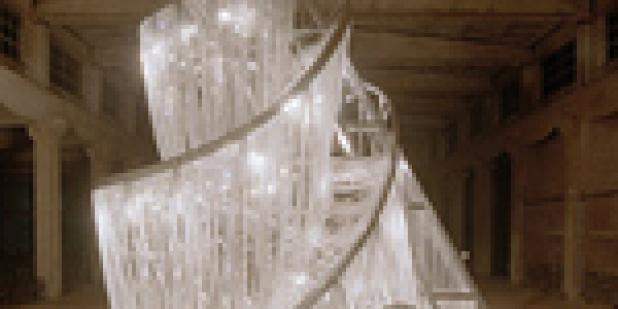Happy Lunar New Year from the USC US-China Institute!
Creativity at a Crossroads: Art and Architecture in China
Dean Qingyun Ma joins Chinese artists, architects and curators to present their visions of the People's Republic

Visions and Voices: The USC Arts & Humanities Initiative
Time : 7:00pm
Join four of China’s most influential figures in the global contemporary arts scene as they review visualizations of the People’s Republic — both the manufactured and the actual. Each artist, architect and curator has commented on China’s multiple urban paradigms in his work, but this forum will converge their perspectives on China after its momentary Olympics-induced urbanism.
This multidisciplinary panel will feature Ai Wei Wei, Beijing-based independent curator and owner of FAKE Design; Chi Peng, internationally exhibited conceptual photographer; and Liu Jiakun, architect and principal of Chengdu-based Jiakun Architects. The discussion will be moderated by Qingyun Ma, dean of the USC School of Architecture and principal of Shanghai-based architecture and design firm MADA s.p.a.m.
One of the most controversial figures in Chinese contemporary art, Ai Wei Wei has candidly criticized and engaged with China’s rapidly emerging urbanisms, portraying the voids, fragments, sections and rings of Beijing in video, sculpture and photography. His work has directly engaged with architecture through his own designs as well as his collaboration with Herzog & de Meuron for the Beijing Olympic Stadium.
Chi Peng, a recent graduate of the Central Academy of Fine Arts in Beijing, is already enjoying international acclaim for his raw depictions of metropolitan Chinese cities. In his series "Sprinting Forward," a clone army of naked Chi Pengs runs through the streets of Beijing or flies through its ever rising skyline. His work reflects the next generation of Chinese artists, adeptly making use of various media, techniques and forms.
Hailing from the Sichuan province, 2003 Chinese Architecture Art Prize recipient Liu Jiakun has said that “translating limited resources in a creative way equals good design.” His works accommodate Chengdu’s limited local building trades, resulting in innovative techniques seen in the Luyeyuan Stone Sculpture Museum, the Red Era Entertainment Center and the Motorola Software Center.
Qingyun Ma, dean of the USC School of Architecture and principal of MADA s.p.a.m., has produced some of the most critical urban designs and creative buildings in China, garnering worldwide recognition.
Organized by the USC School of Architecture.
visionsandvoices@usc.edu
Featured Articles
We note the passing of many prominent individuals who played some role in U.S.-China affairs, whether in politics, economics or in helping people in one place understand the other.
Events
Ying Zhu looks at new developments for Chinese and global streaming services.
David Zweig examines China's talent recruitment efforts, particularly towards those scientists and engineers who left China for further study. U.S. universities, labs and companies have long brought in talent from China. Are such people still welcome?






